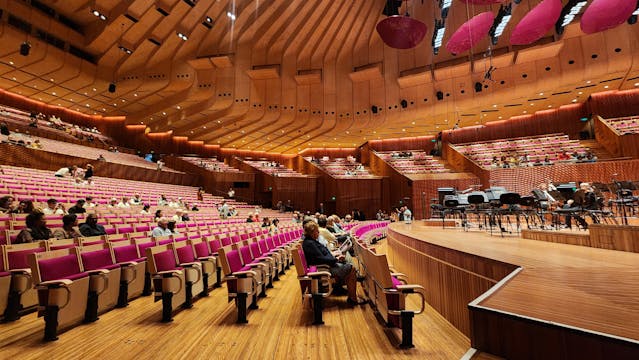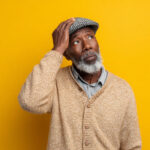Art is far more than an indulgence for the imagination or a vehicle for creative self-expression; it can also serve as a potent and practical instrument for public health. That is the central message emerging from a landmark international study commissioned by the Jameel Arts and Health Lab, which scrutinised nearly one hundred research projects spanning twenty-seven countries. The study explored how participation in creative and cultural activities—ranging from music, dance, theatre, and storytelling to painting, crafts, and gardening—can contribute to the prevention of some of the world’s deadliest non-communicable diseases, including heart disease, diabetes, and cancer. These conditions, which account for an estimated seventy-four per cent of preventable deaths worldwide, represent an immense burden on healthcare systems and societies. The findings suggest that by embracing artistic engagement as a component of public health strategies, communities could reduce risk factors for disease while enhancing quality of life and well-being.
The timing of this research is particularly significant, as it coincides with an international meeting convened by the World Health Organization devoted to the prevention of non-communicable diseases. As policymakers, clinicians, and researchers seek new ways to reduce the global prevalence of chronic illnesses, the study offers compelling evidence that the arts can play a transformative role in shaping healthier societies. Rather than existing on the margins of healthcare policy, the arts are presented here as integral to public health infrastructure. Through active participation in creative programmes, individuals may not only improve their physical and mental health but also strengthen social bonds and community resilience. This growing body of evidence invites a reimagining of health promotion—one that values creativity, emotion, and culture as vital components of human flourishing.
At the heart of the study’s message is a call to shift the focus of healthcare from treatment to prevention. Jill Sonke, PhD, the director of research initiatives at the University of Florida’s Centre for Arts in Medicine and the lead author of the study, argued that the arts have untapped potential in preventing chronic disease before it develops. “We don’t want just to treat these diseases; we want to prevent them,” Sonke remarked. She emphasised that investments in health should “move upstream” from clinical treatment toward prevention, with creative engagement serving as a central pillar in that effort. The study she co-led—published on 18 September in Nature Medicine—represents one of the most comprehensive analyses of its kind, incorporating data from ninety-five studies and more than 230,000 participants. Supported in part by the State of Florida Division of Arts and Culture and New York University, the research provides a scientifically grounded framework for integrating artistic practice into health policy.
Working alongside Sonke was Michael Tan, PhD, dean of research and knowledge exchange at the University of the Arts Singapore, who helped direct the international team of scholars involved in the project. Their collective findings demonstrate that participation in the arts can yield measurable benefits across a variety of health indicators. Meanwhile, co-author Nisha Sajnani, PhD, a professor at NYU Steinhardt and co-director of the Jameel Arts and Health Lab, underscored the importance of treating the arts not as a luxury, but as essential public health infrastructure. “If we are serious about reducing the global burden of non-communicable diseases, we must treat the arts as essential to public health infrastructure,” she noted. Sajnani highlighted that artistic and cultural programmes offer cost-effective, scalable tools for prevention that can be embedded within community health initiatives. By grounding these programmes in partnership with local communities, she argued, they can bridge equity gaps, increase access, and promote the adoption of healthier behaviours.
One of the study’s most striking conclusions is that arts-based programmes make health education more engaging, memorable, and effective. For example, a community play focused on healthy eating can translate nutritional guidance into relatable narratives; a dance class can encourage physical activity without the intimidation of gym environments; and a community gardening project can nurture both physical well-being and social connectedness. These activities convert abstract health information into lived experience. Notably, the research suggests that the social and emotional connections fostered by such programmes are as vital to health outcomes as the behaviours themselves. Participation in group-based, creative initiatives tends to sustain engagement far longer than traditional health campaigns, which often struggle to maintain public interest. When people are motivated by joy, creativity, and shared purpose, they are more likely to adopt and sustain healthy habits.
Moreover, the cultural relevance of artistic interventions enhances their effectiveness in ways that traditional medical campaigns often overlook. Programmes that draw upon local cultural forms—such as indigenous storytelling, traditional dance, or regional crafts—resonate more deeply within their communities. They provide familiar contexts through which important health messages can be conveyed and normalised. In this way, the arts serve as a bridge between scientific knowledge and cultural practice, ensuring that prevention campaigns are not only informative but also inclusive and meaningful. The study found that when health messages are culturally grounded, participation rates increase, behavioural change becomes more sustainable, and public trust in health institutions improves. These insights illustrate how culturally responsive approaches to public health can create more equitable systems of care.
Despite the strength of its findings, the research team acknowledged that there is still much to learn about the long-term impacts of arts participation on health outcomes. Most of the existing studies have been conducted in high-income countries, which raises questions about how such interventions might function in lower-income or resource-limited settings. Additionally, few studies have tracked participants over extended periods to determine whether the health benefits of creative engagement persist. Nevertheless, the evidence so far points towards a powerful conclusion: that the arts are not a mere luxury or afterthought in healthcare, but a vital component of disease prevention. By weaving creativity into the fabric of community life, societies can build resilience, reduce the prevalence of chronic illness, and enrich human experience.
Ultimately, this international study invites a profound reconsideration of how we define and promote health. Medicine and art, often viewed as separate realms, may in fact be complementary forces working toward a common goal: the flourishing of human life. By engaging people’s emotions, imaginations, and cultural identities, the arts can transform abstract health directives into meaningful, lived realities. As governments and organisations seek new ways to confront the escalating global crisis of non-communicable diseases, these findings present a hopeful and holistic vision—one in which creativity itself becomes an essential part of the world’s public health toolkit.
More information: Jill Sonke et al, The arts for disease prevention and health promotion: a systematic review, Nature Medicine. DOI: 10.1038/s41591-025-03962-7
Journal information: Nature Medicine Provided by University of Florida








